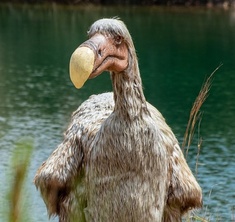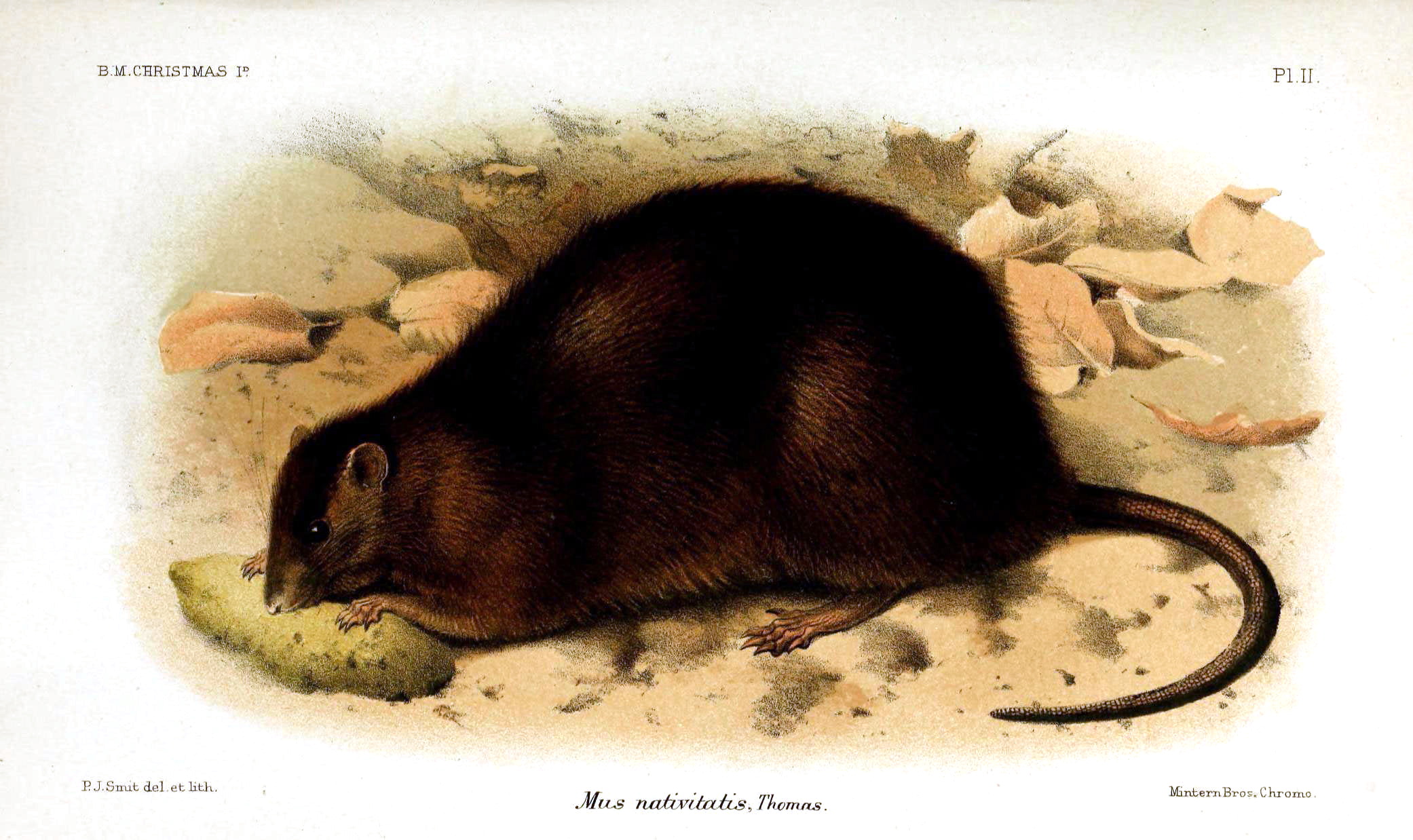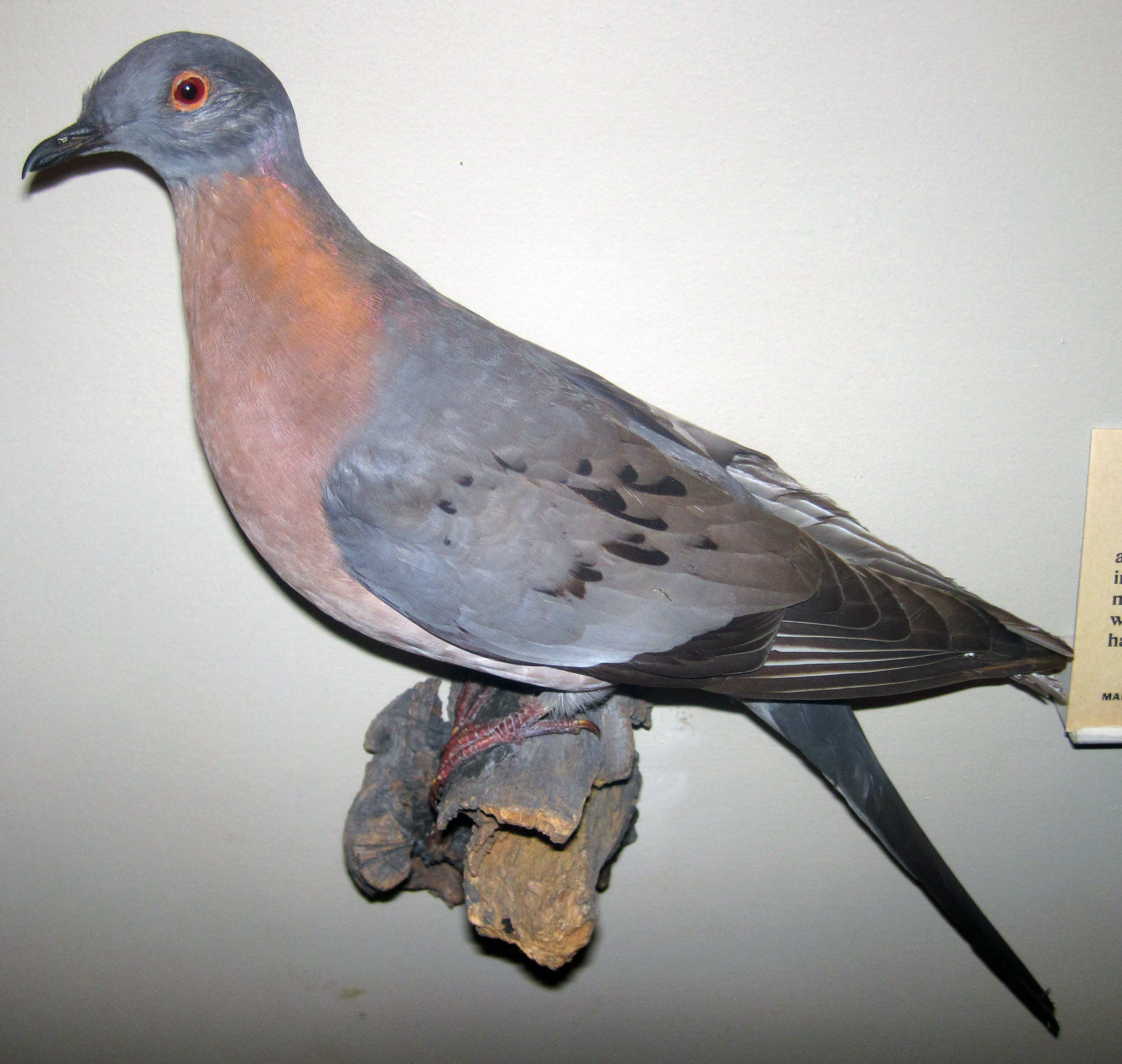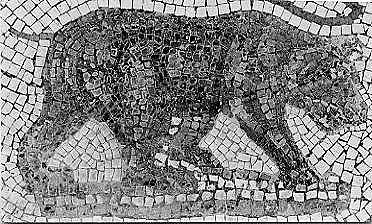
Intriguing cases of species extinction
First published: Monday April 5th, 2021
Report this blog
Maclear's Rat:
Little rat, big impact-
Christmas Island is probably most famous for scenes such as this;

The annual mass migration of the Christmas Island red crab.
The red crab is found mostly in Christmas Island's forests, but they are famous for travelling every October/November time en masse out to sea to lay their eggs. This crab species is believed to number in the tens of millions, its population having reached as much as 40 million at its peak. On such a tiny island (only 135 km2), it's no wonder they tend to overcrowd the place. How come there are so many on the island?
In their adult form the crabs have very few natural predators. In particular they had one less natural predator to worry about after 1903, with the extinction of perhaps their foremost predator, the Maclear's rat.

The Maclear's rat was a large species of brown rat which was native to Christmas Island. Another native species was the Bulldog rat.

Both species went extinct within a few years of human settlement of Christmas Island (surprise surprise).
As is quite often the case when a species is suddenly introduced to a new area, the native species, not recognising the new species, has no instinctive aversion to it. The Maclear's rat would enter into settlers' tents and even climb over them in search of food.
But the real menace for the Maclear's rat were stowaway black rats aboard the settlers' ship, who, in turn, are believed to have brought disease to Christmas Island (likely Trypanosoma lewisi, a worldwide rat parasite), driving both native species of rat to extinction by 1903.
During the early years of settlement sightings of red crabs on Christmas Island (let alone gatherings of several million of them) were scarcely mentioned. But evidently their numbers steadily increased over time, which suggested that either the settlers were blind, or that the Maclear's rat was actually responsible for keeping the crab population steady. If this is the case, then it serves as one of the most prime examples of how slight changes in the balance of a predator/prey relationship can have dramatic consequences.
What is further curious is that it is so far only suggested that the Maclear's rat was responsible for keeping the crab population steady. Among the very limited available information about the Bulldog rat, it is not suggested anywhere that they were also predators of the crabs.
Sadly, because both rat species went extinct so soon after being discovered, we may never know for certain, but I propose it is at least a possibility that both rat species may have preyed on the red crab.
Though the inadvertent introduction of the black rat by humans has allowed the red crab to flourish, in an ironic twist, humans have also inadvertently introduced another species which is causing red crab numbers to fall again; the yellow crazy ant.

The yellow crazy ant is a highly invasive species found across Southeast Asia. They have been found at numerous spots across Australia, bringing serious concerns about the potential damage they may inflict on the environment, which they are most notably already doing on Christmas Island.
First noticed on Christmas Island in the 1930s, the ants have been plaguing numerous species of native crab by stealing their burrows and also preying on them. They are believed to have reduced the population of the red crab by up to 10 million or 25%.
Passenger pigeon:
Decline most rapid-

If the swarms of Christmas Island red crab seem impressive, just imagine seeing a flock of passenger pigeons. It was once common across North America, with possibly as many as 5 billion of them at peak population. It is said that flocks of them were colossal, reaching hundreds of miles long, large enough to block out the sun, and taking several hours to pass over completely.
The story of the passenger pigeon is similar to the red crab too. They were once hunted by Native Americans for food, perhaps enough to keep the population levels quite low. But it has been suggested that the fall in the Native population following the arrival of European colonists, and the diseases they brought with them, may have allowed the passenger pigeon to flourish.
In any case, the passenger pigeon may have been the most populous bird species in the world for a time, but there was a slow decline in their numbers from 1800 onwards, due to a combination of destruction of their habitat, competition for food, and large-scale commercial hunting by humans. This decline sharpened intensely after 1870 with intensive hunting.
By 1910 there were only 3 passenger pigeons left. By 1912 there was only one; a female named Martha.

Martha died of old age on 1st of September 1914, and with her died the passenger pigeon species.
As staggering as the flocks of passenger pigeons in the sky must have been to witness, it is equally mind-boggling how a species of such a huge number can be hunted to total extinction in a relatively short space of time. In these terms, surely no other case of hunting driven extinction even comes close to that of the passenger pigeon.
Pyrenean ibex:
Twice extinct-

The Pyrenean ibex is the only animal to have been declared 'unextinct', and the only species to go extinct twice.
It was a subspecies of the Iberian ibex, and was once commonly found in the Pyrenees and Cantabrian mountain ranges, but its numbers declined as it was hunted heavily over the last 200 years. Over 100 years before its own extinction its cousin the Portuguese ibex was driven to extinction by hunting.
In 1900 there were fewer than 100 Pyrenean ibex, and it took until 1993 for the government to put in place a preservation programme, by which time only 10 ibex remained. The last known Pyrenean ibex was a female named Celia, who was brought to live in the Ordesa National Park, high up in the Pyrenees close to the French border.
Tragically, on the 6th of January 2000, Celia was found dead by park rangers, having been crushed by a falling tree. With her death the Pyrenean ibex was gone forever... or was it?
A year before her death tissue samples were collected from Celia, and following her death an American based biotech company sought to attempt to use her tissue in an experiment that aimed to clone her. Only a few years earlier Dolly the sheep had been successfully cloned, giving hope to the prospect of reviving the Pyrenean ibex from extinction.
Working with Spanish and French scientists, 439 embryos containing Celia's DNA were created, 57 of which were implanted into female goats acting as surrogate mothers, and in July 2003 one of them was eventually born. But only a few minutes after being born she died from breathing difficulties due to a lung deformity. The unfortunate animal's legacy remains the first and so far only remotely successful de-extinction case in the world. But the failure to clone Celia highlighted many fundamental problems and questions about the viability and the ethics of trying to revive an extinct species, and of cloning in general.
Jurassic Park could be seen as a good, if fantastical, cautionary tale of the dangers of trying to revive an extinct species, but the case of Celia the Pyrenean ibex is a real life instance which raises many serious points. Firstly, even if the clone had survived and was healthy, there were no males left to breed with to allow the species to revive itself. This might have been resolved by interbreeding with other closely related subspecies, or by genetically engineering male embryos, itself carrying heavy risks of causing further animal suffering.
On an even more delicate note, is it ethical to try to revive extinct species, at least in this way? Cloning is yet another of many topics on which opinion can be highly polarised.
But one thing is for sure, the dramatic case of the extinction and temporary un-extinction of the Pyrenean ibex need never have happened if procedures were put in place to protect its survival early enough.
Sea mink:
We hardly knew ye-

The sea mink is believed to have been a subspecies or even a distinct species of mink living in New England. It may have been the largest variety of mink the world, and spent more time in water than most kinds of mink.
Like other species of mink, the sea mink was brutally hunted for its fur. As if hunting an animal for its precious fur for fashion isn't horrific enough, the poor sea mink was hunted so extensively the species was totally wiped out, as it was particularly desirable for its fur due to its large size.
It was hunted throughout the 19th century. After 1860 sea mink were very rarely sighted. What is likely the last recorded sighting of a sea mink was in 1894, after which it was officially declared extinct.
What is intriguing about the case of the sea mink is that it was only first scientifically described in 1903, extraordinarily making it one of very few cases where a species in modern times is described after its own extinction.
The sea mink could only be described from analysis of bone fragments, mostly of its teeth, which leaves much of our understanding of it to speculation. You can reasonably expect this in the case of dinosaurs who have been extinct for 65 million years, but to see this almost in living memory is exceptional.
Lost with the sea mink is any opportunity for fully understanding its behaviour, appearance, diet, and may leave its status as a distinct species or a subspecies forever unresolved.
Atlas bear:
The last bear in Africa-

The Atlas bear is truly mystifying. Even at the time of its initial description in the 1840s there was much controversy over how to classify it, and since the bear went extinct before that question could be answered, the debate wages on.
The Atlas bear was the only species of bear native to Africa known to have lived in modern times, found in and around the Atlas Mountains, from Morocco through Libya. It was a small-medium bear with short brown fur, a stocky body with short claws, and believed to live primarily on roots and nuts.
Was it a distinct species? Was it a subspecies of another bear species? Was it an allopatric population of the Cantabrian brown found in nearby Iberia?
Like many other unfortunate creatures, the Atlas bear was routinely hunted by the Romans for sport, and for use in arena battles with humans and other animals. It is even possible that they were introduced to Africa from Spain by the Romans. But an already fragile population of Atlas bears was driven to total extinction with the arrival of hunters with guns in the 19th century. The last recorded killing of an Atlas bear was in Morocco in 1870, and the species was declared extinct in 1890.
It is entirely probable that other ecological pressures such as changes in the environment contributed to the extinction of the Atlas bear, but hunting since the time of the Romans was unquestionably a critical factor in the demise of the only bear species in Africa.
Their tragic story is paralleled by that of the Barbary lion, a population of lion living across northern Africa, also driven extinct by extensive hunting from as early as Roman times.
Supposedly there were unconfirmed sightings of Atlas bears in Algeria in the 1950s. Perhaps a few small numbers of them still live hidden away amidst the Atlas Mountains. If so, one hopes they can be left in peace.
Steller's Sea Cow:
Here today, gone today-

Manatees and dugongs are marine mammals from the Order of Sirenians. They may have inspired the mythological sirens of antiquity. They are beautiful, gentle creatures. They are the only herbivorous pelagic marine mammals in the world, and relatives of the elephant. But there used to be another kind of sirenian; the Steller's Sea Cow.
Manatees and dugongs are very similar in physiognomy, behaviour and size. Dugong adults can be about 3 metres long, manatees can grow slightly larger at about 4 metres long. But the Steller's Sea Cow could reach a huge 9 metres long.
While Manatees and Dugongs prefer tropical climates, the Steller's Sea Cow was found in the cold waters of the north Pacific. Fossil finds show that they once lived widespread across the north Pacific, even off the coast of Japan, but at the time of their discovery in 1741, they were found only to live in the seas around the Commander Islands east of the Kamchatka peninsula.Whalers must have leapt for joy at the discovery of the Steller's Sea Cow. It was large, slow, docile, and very buoyant, so its carcass would float after being harpooned. Its meat and fat were highly prized. In 1741 there were fewer than 1,500 Steller's Sea Cows, but they were hunted to total extinction by 1768, a mere 27 years after their discovery. Several species have been hunted to oblivion within a short space of time after their initial discover, but even among them, surely the extinction of the Steller's Sea Cow is a record.
Theories suggest that the Steller's Sea Cow was already facing ecological pressures, possibly having been driven out of areas such as the Aleutian Islands due to hunting by aboriginal Alaskans. Furthermore kelp, their food source, may have been under threat from a period of anomalous warmer temperatures, and even sea urchin prevalence, which, in turn, may have been caused by over hunting of their main predator, the sea otter.
Nonetheless it's a safe bet that, pre-existing pressures or not, the Steller's Sea Cow was likely doomed to extinction eventually anyway, leaving future generations deprived of seeing and studying these magnificent gentle giants forever.
What do all these examples have in common?
They were all species that were primarily or completely driven to extinction directly or indirectly due to human activity.
Species extinction is really rather a poignant prospect, especially when you really think about how a whole species can simply vanish forever, but sometimes it is just unavoidable. However, it is painfully clear that humans are proficient at driving even thriving populations of animals to complete annihilation. Numerous species of animal today are endangered or critically endangered as a result of anthropogenic activities.
So as a species we must ask ourselves, do we want to live in a desolate world with no diversity, where so many beautiful and captivating creatures are wiped out and forgotten, and where magnificent animals such as gorillas, elephants, whales, bees, corals, sharks, rhinos, giraffes, and so many others will only ever be seen again in museums or on Google images?
If the answer is no, then the first step in tackling anthropogenic species extinction is recognising what causes it. The biggest factors include intensive hunting, habitat destruction, and upsetting the ecological balance of an ecosystem, and then taking action by refusing to support this through exercising your rights to choose more sustainable alternatives instead. Small changes can make a difference, if enough people make a change to their habits then market forces of supply and demand can pressurise industries to make more sustainable choices in turn.
Where possible, avoid supporting industries that make use of some of the most environmentally destructive activities such as;
Thank you very much for reading. If you would like to take a quiz on species driven to extinction by humans, click here.

And finally a HelveticaBlog! Was a nice reading!